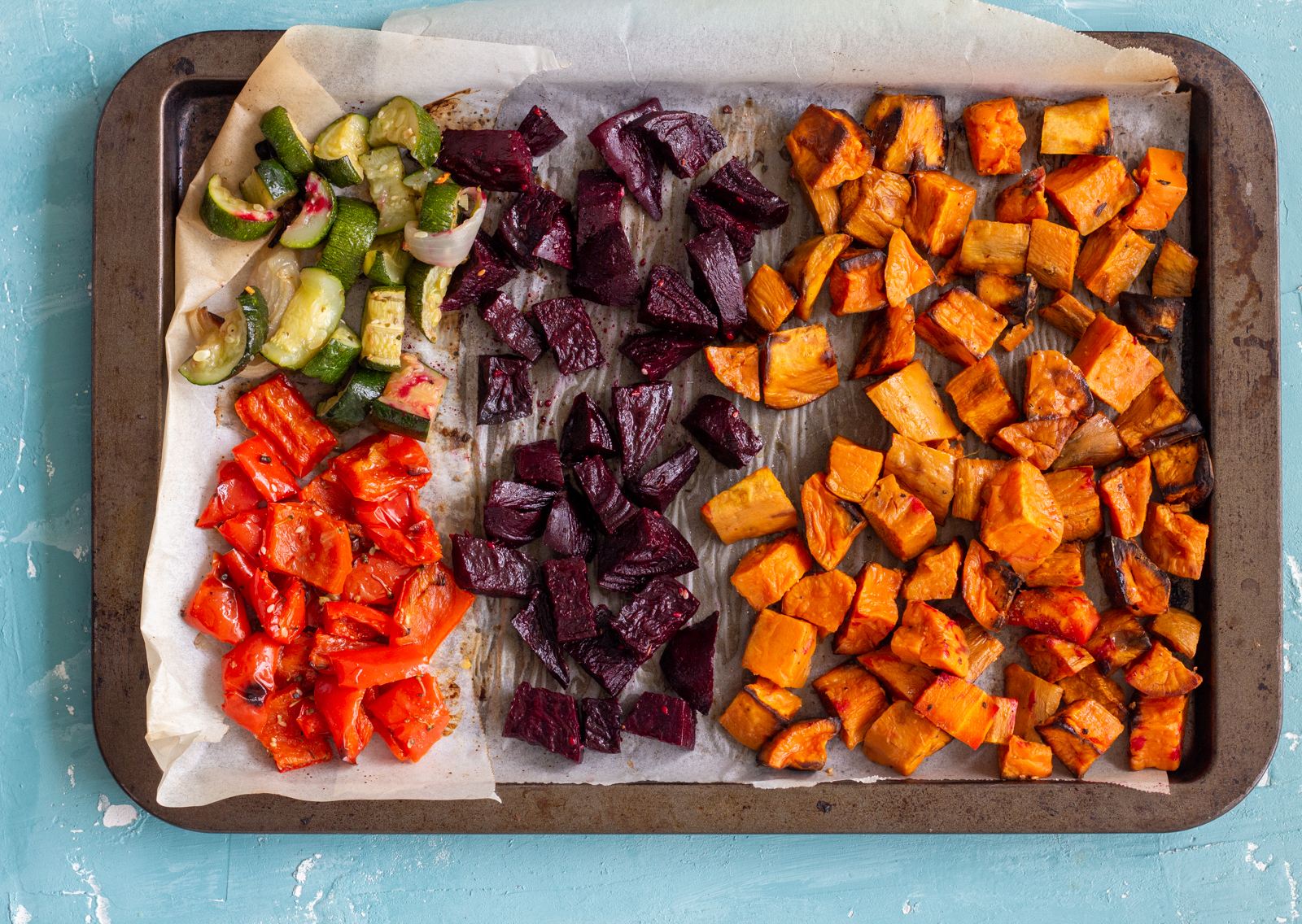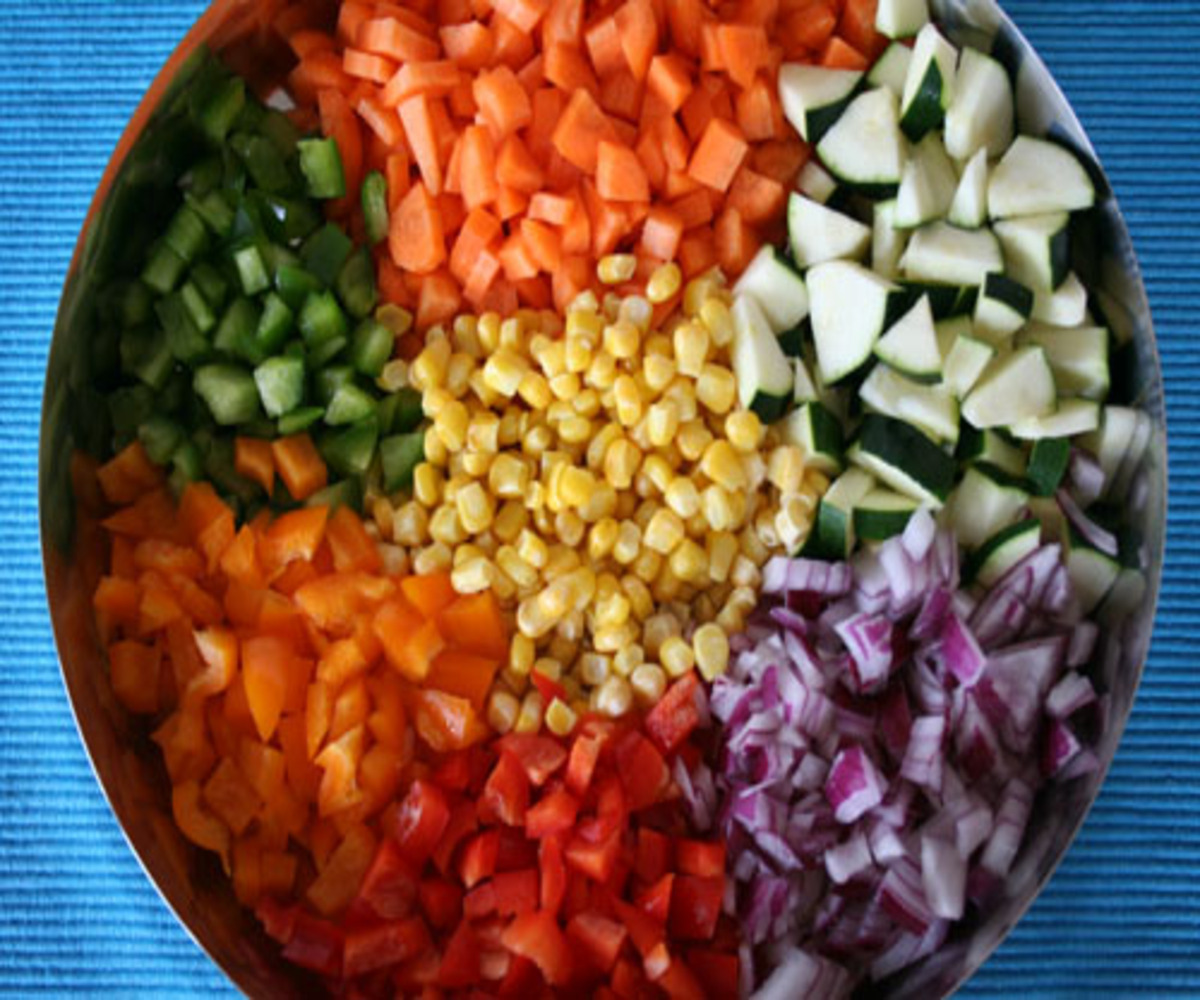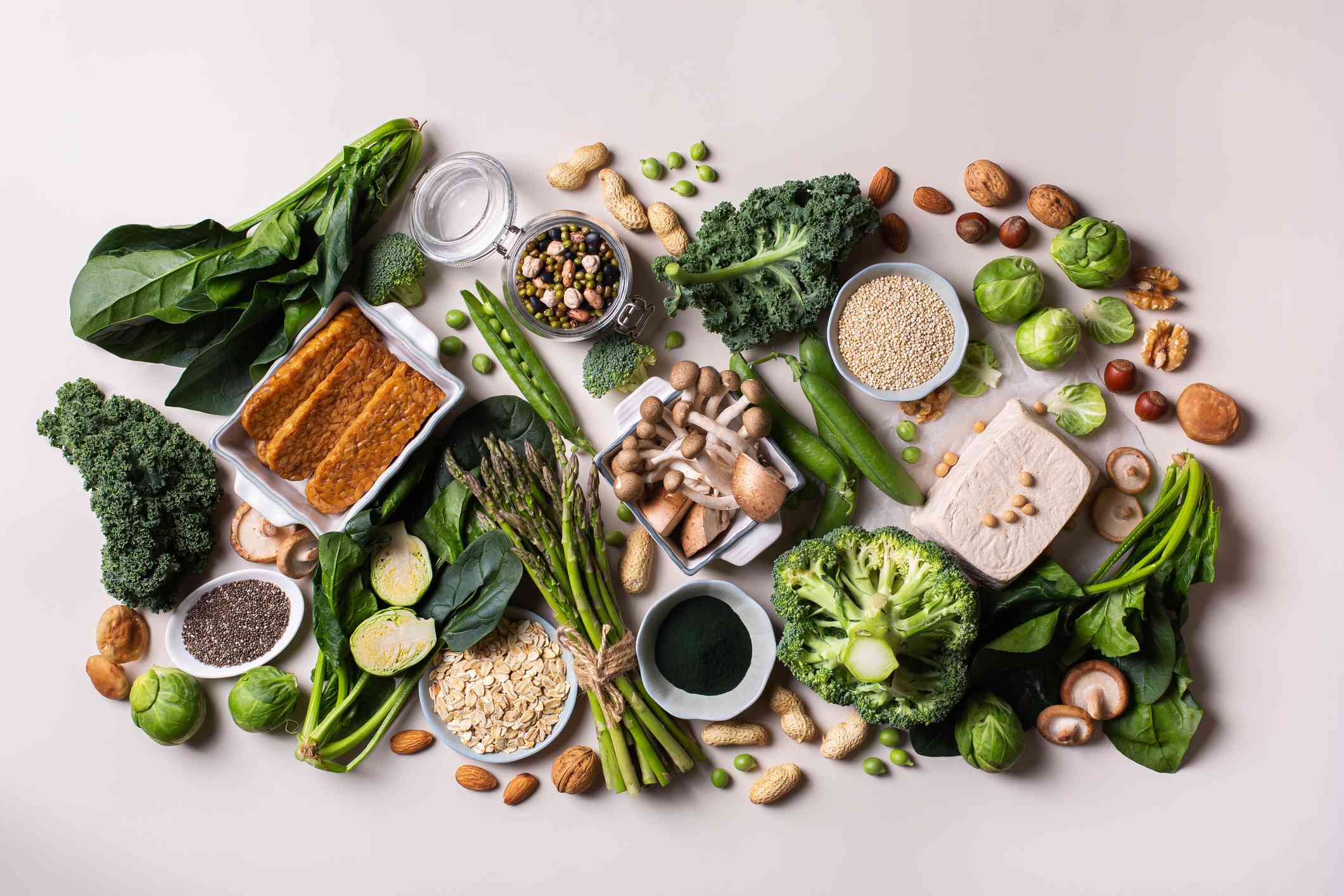Home>Types of Gardening>Edible Gardening>What Are Non Starchy Vegetables


Edible Gardening
What Are Non Starchy Vegetables
Modified: January 22, 2024
Discover the benefits of non-starchy vegetables in edible gardening. Enhance your garden with these nutrient-packed veggies that are low in carbs and high in fiber.
(Many of the links in this article redirect to a specific reviewed product. Your purchase of these products through affiliate links helps to generate commission for Chicagolandgardening.com, at no extra cost. Learn more)
Table of Contents
Introduction
Welcome to the world of non-starchy vegetables! If you’re looking to improve your health and maintain a balanced diet, non-starchy vegetables are an essential component. These vegetables provide a myriad of nutritional benefits and are a fantastic addition to any meal plan.
Unlike starchy vegetables such as potatoes, corn, and peas, non-starchy vegetables are lower in carbohydrates and calories. They are packed with vitamins, minerals, and fiber, making them an excellent choice for those aiming to lose weight, manage diabetes, or simply improve their overall well-being.
Non-starchy vegetables come in various shapes, colors, and flavors, offering a wide range of options to satisfy even the pickiest of eaters. From leafy greens to vibrant peppers and crunchy cucumbers, these vegetables add both culinary and visual appeal to your plate.
In this article, we will explore the definition of non-starchy vegetables, highlight their health benefits, provide examples of commonly consumed non-starchy vegetables, and offer tips on how to incorporate them into your daily diet. So, let’s embark on this delicious and nutritious journey to discover the wonders of non-starchy vegetables!
Definition of Non Starchy Vegetables
Non-starchy vegetables are a category of vegetables that are low in carbohydrates and calories compared to their starchy counterparts. These vegetables are typically high in water content and fiber, which promotes a feeling of fullness and aids in digestion.
Starchy vegetables, on the other hand, contain higher levels of carbohydrates and calories. Examples of starchy vegetables include potatoes, corn, peas, and winter squash. While starchy vegetables can still be part of a healthy diet, non-starchy vegetables are particularly beneficial for those looking to manage their weight or blood sugar levels.
Non-starchy vegetables are known for their versatility and can be enjoyed raw or cooked. They are often characterized by their crunchy texture, vibrant colors, and robust flavors. Some popular examples of non-starchy vegetables include leafy greens like spinach, kale, and lettuce, as well as cruciferous vegetables like broccoli, cauliflower, and Brussels sprouts.
These vegetables are also a rich source of essential vitamins and minerals. They are typically low in fat and sodium, and many varieties are excellent sources of vitamin C, vitamin A, potassium, and folate. Additionally, non-starchy vegetables are loaded with phytochemicals, which are natural compounds that have been shown to support overall health and protect against chronic diseases like heart disease, cancer, and diabetes.
One important aspect of non-starchy vegetables is their impact on blood sugar levels. Since they have a lower carbohydrate content, they cause a slower and more gradual release of glucose into the bloodstream compared to starchy vegetables or other high-carb foods. This can be beneficial for individuals with diabetes or those aiming to regulate their blood sugar levels.
In summary, non-starchy vegetables are low-carbohydrate and low-calorie vegetables that are packed with vital nutrients and health-promoting compounds. Incorporating these vegetables into your diet can help you achieve a balanced and nutritious eating plan.
Health Benefits of Non Starchy Vegetables
Non-starchy vegetables offer a multitude of health benefits due to their nutrient density and low-calorie content. Incorporating these vegetables into your diet can have a positive impact on your overall well-being. Here are some of the health benefits that non-starchy vegetables provide:
- Weight Management: Non-starchy vegetables are low in calories and high in fiber, which can help promote weight loss and weight management. The high fiber content keeps you feeling full for longer periods, reducing the likelihood of overeating or snacking on unhealthy foods.
- Improved Digestion: Non-starchy vegetables are rich in dietary fiber, which aids in digestion and promotes regular bowel movements. The fiber content helps prevent constipation and supports a healthy digestive system.
- Heart Health: Many non-starchy vegetables are packed with vitamins, minerals, and antioxidants that contribute to heart health. The high levels of potassium and magnesium found in these vegetables help regulate blood pressure, while the antioxidants help reduce inflammation and improve cholesterol levels.
- Blood Sugar Control: Non-starchy vegetables have a low glycemic index, meaning they have minimal impact on blood sugar levels. This makes them an excellent choice for individuals with diabetes or those aiming to control their blood sugar levels.
- Reduced Risk of Chronic Diseases: Non-starchy vegetables contain various phytonutrients, including flavonoids and carotenoids, that have been linked to a decreased risk of chronic diseases such as heart disease, certain types of cancer, and neurodegenerative disorders.
- Improved Skin Health: The abundance of antioxidants and vitamins in non-starchy vegetables can have a positive impact on skin health. These vegetables help fight free radicals, protect against sun damage, and promote collagen production, resulting in healthier and more youthful-looking skin.
It is important to note that the health benefits of non-starchy vegetables are best obtained through consistently incorporating them into your diet and enjoying a variety of different vegetables. Aim to consume a rainbow of colors and experiment with different cooking methods to maximize the nutritional value you receive.
Overall, non-starchy vegetables offer numerous health benefits, from aiding in weight management and digestion to promoting heart health and reducing the risk of chronic diseases. Adding these flavorful and nutritious vegetables to your meals is a simple yet effective way to enhance your overall well-being.
Examples of Non Starchy Vegetables
Non-starchy vegetables come in a wide variety of shapes, colors, and flavors, offering a plethora of options to suit your taste preferences. Here are some popular examples of non-starchy vegetables:
- Leafy Greens: Spinach, kale, arugula, romaine lettuce, and Swiss chard are just a few examples of leafy greens. They are packed with vitamins, minerals, and antioxidants, making them a nutrient powerhouse.
- Cruciferous Vegetables: Broccoli, cauliflower, Brussels sprouts, cabbage, and bok choy fall into this category. These vegetables are rich in fiber, vitamins, and phytochemicals, and their unique flavors and textures can enhance any dish.
- Root Vegetables: While some root vegetables like potatoes and sweet potatoes are considered starchy, others like carrots, radishes, turnips, and beets are non-starchy. These vegetables are full of vitamins and minerals and can add a pop of color to your meals.
- Bell Peppers: Whether it’s red, green, or yellow, bell peppers are a delicious and versatile non-starchy vegetable. They are a great source of vitamin C and can be enjoyed raw in salads, sautéed, or stuffed and baked.
- Cucumbers: Crisp and refreshing, cucumbers are a hydrating non-starchy vegetable that adds crunch to any salad or sandwich. They are low in calories and a great source of hydration during hot summer months.
- Zucchini and Summer Squash: These versatile vegetables can be spiralized into noodles, grilled, sautéed, or added to soups and stews. They are low in calories and a fantastic source of vitamins and minerals.
- Tomatoes: Technically a fruit, tomatoes are often used as a vegetable in savory dishes. These vibrant and juicy gems are rich in antioxidants and can be enjoyed raw in salads or cooked in various recipes.
- Green Beans: Green beans, also known as snap beans, are a delicious non-starchy vegetable. They are a good source of fiber and vitamin C, and can be enjoyed steamed, sautéed, or included in stir-fries.
These are just a few examples of the wide variety of non-starchy vegetables available to you. To get the most out of your meals, experiment with different vegetables and cooking methods. Whether you enjoy them raw, steamed, grilled, or stir-fried, non-starchy vegetables can add flavor, texture, and nutritional value to your diet.
How to Incorporate Non Starchy Vegetables into Your Diet
Incorporating non-starchy vegetables into your diet is a fantastic way to boost your nutrition and add variety to your meals. Here are some tips to help you make non-starchy vegetables a regular part of your daily eating plan:
- Add them to salads: Start by tossing a variety of leafy greens like spinach, mixed greens, or kale into your salads. Amp up the nutritional value by adding other non-starchy vegetables like cucumber, bell peppers, and cherry tomatoes. Experiment with different dressings and toppings to enhance the flavors.
- Sauté or stir-fry: Sauté or stir-fry a medley of non-starchy vegetables such as bell peppers, broccoli, zucchini, and mushrooms. Add some garlic, herbs, and spices for added flavor. You can enjoy these cooked veggies as a side dish or incorporate them into your favorite stir-fry recipes.
- Roast them: Roasting vegetables brings out their natural flavors and adds a delicious caramelized taste. Try roasting non-starchy vegetables like cauliflower, Brussels sprouts, and carrots in the oven with some olive oil, salt, and pepper. Roasted vegetables make a satisfying side dish or can be added to grain bowls or wraps.
- Blend into smoothies: Sneak in some non-starchy vegetables into your morning smoothies for an added nutritional boost. Spinach or kale can be easily blended with fruits, yogurt, and a liquid of your choice to create a refreshing and nourishing smoothie.
- Replace pasta with zoodles: Use a spiralizer to turn zucchini or summer squash into noodles, also known as zoodles. These can be a fantastic substitute for traditional pasta and can be paired with your favorite sauces or toppings.
- Stuff and bake: Hollow out bell peppers or zucchinis and stuff them with a mixture of cooked quinoa or lean protein, non-starchy vegetables, and herbs. Bake them in the oven for a delicious and nutritious meal.
- Make veggie-based soups and stews: Non-starchy vegetables are a great addition to soups and stews. Make a hearty vegetable soup using a combination of non-starchy vegetables like carrots, celery, green beans, and leafy greens.
- Snack on raw veggies: Keep a selection of raw non-starchy vegetables washed and prepped in your refrigerator for a quick and healthy snack. Carrot sticks, celery, and cherry tomatoes are excellent options for on-the-go snacking.
Remember, the key to incorporating non-starchy vegetables into your diet is to get creative and try new things. Be open to experimenting with different vegetables, cooking methods, and flavor combinations. By making non-starchy vegetables a regular part of your meals, you can enhance the nutritional value of your diet and enjoy the benefits they provide for your overall health and well-being.
Conclusion
Non-starchy vegetables are a crucial component of a healthy and balanced diet. With their low carbohydrate and calorie content, along with their abundance of vitamins, minerals, and fiber, non-starchy vegetables provide numerous health benefits. From aiding in weight management and promoting digestion to supporting heart health and reducing the risk of chronic diseases, these vegetables are a nutritional powerhouse.
By incorporating non-starchy vegetables into your meals, you can increase the variety and nutritional value of your diet. Whether you enjoy them raw in salads, sautéed in stir-fries, roasted as a side dish, or blended into smoothies, there are endless ways to incorporate these vegetables into your favorite dishes.
Remember to choose a colorful assortment of vegetables to get a diverse range of nutrients and flavors. Leafy greens, cruciferous vegetables, root vegetables, bell peppers, cucumbers, and green beans are just a few examples of the wide range of non-starchy vegetables available to you.
Make it a habit to prioritize non-starchy vegetables in your meal planning and embrace their versatility in the kitchen. Whether you’re aiming to lose weight, manage diabetes, or simply improve your overall well-being, non-starchy vegetables can play a significant role in reaching your goals.
So, start exploring different recipes, cooking techniques, and flavor combinations to make non-starchy vegetables a delicious and integral part of your daily meals. Your body will thank you for the essential nutrients and health benefits they provide, helping you live a vibrant and fulfilled life.










